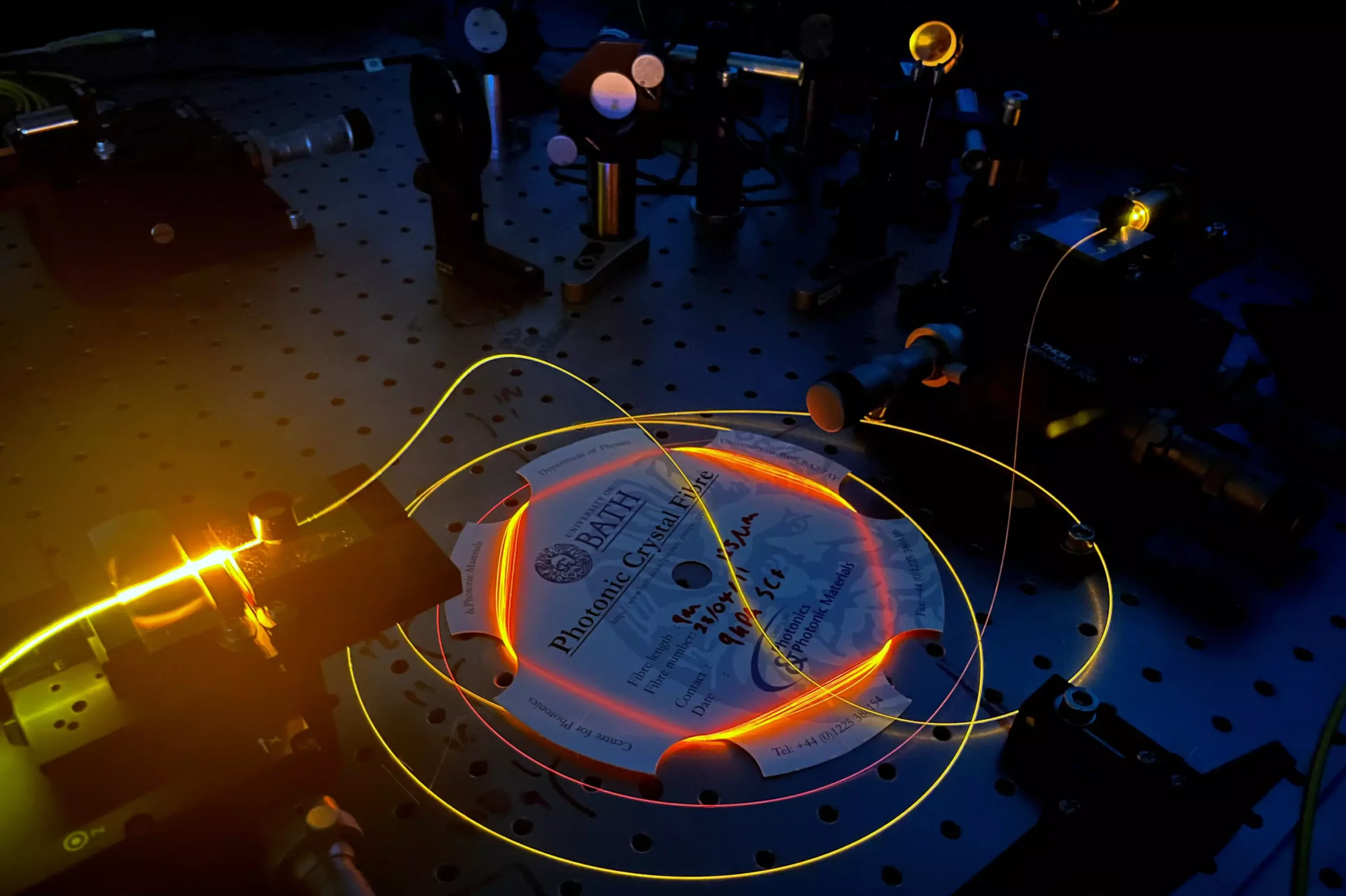As we stand at the precipice of a new digital era, the intertwining of quantum computing and communication is poised to reshape entire industries. The work conducted by physicists at the University of Bath in the UK exemplifies a visionary pursuit to address these future communication needs through the development of revolutionary specialty optical fibers. These fibers, designed intricately with micro-structured cores, are not merely adjustments to existing technologies; they represent a monumental leap into the realm of possibilities that quantum technologies promise.
The Limitations of Traditional Optical Fibers
Traditional optical fibers, the backbone of contemporary telecommunications, have proven effective yet limited when it comes to the specific needs of quantum technologies. These fibers transmit light through solid silica cores, a medium optimized for conventional data transfer, but closely tied to the inherent losses of silica glass. As Dr. Kristina Rusimova points out, such conventional fibers operate at wavelengths incongruent with the requirements of quantum mechanics—principally the wavelengths utilized in the generation and manipulation of photons. This misalignment signifies that as quantum computing evolves, our legacy infrastructure will necessitate a paradigm shift.
Innovative Design of Specialty Optical Fibers
The newly developed specialty fibers from Bath incorporate a micro-structured core that features a clever array of air pockets throughout their length. This design is not merely an aesthetic endeavor; it fundamentally alters how light behaves within the fiber. By facilitating the manipulation of light properties, these fibers enable the creation of entangled photon pairs, which are instrumental in harnessing quantum phenomena for computational advancements. Such fibers are akin to the race cars of the fiber optics world—engineered for speed and performance in the highly competitive landscape of quantum technology.
Potential of Quantum Entanglement in Computing
The essence of quantum computing lies in the unique properties of photons, which can exist in multiple states simultaneously due to quantum entanglement. This radical departure from binary computation offers a glimpse into a future where computations could be performed at speeds unimaginable by today’s standards. Imagine complex drug simulations or cryptographic systems that are virtually unbreakable, transforming industries from healthcare to security. As Dr. Cameron McGarry signals, a robust quantum internet is essential for realizing these ambitious potentials, expanding far beyond what the existing infrastructure can deliver.
Building a Quantum Internet
Establishing an extensive quantum internet requires not just innovation in fiber optics but an entire rethinking of how we transfer information. As stated, these optical fibers will need to be complemented with new technology that supports quantum networking’s unique demands. We must consider how to integrate quantum repeaters capable of extending the range of these communications without succumbing to the usual pitfalls of signal loss. The researchers highlight their awareness of the multifaceted challenges of developing a broad-scale quantum network, emphasizing that this is not merely an upgrade but rather an evolution of current methodologies.
The Multifaceted Roles of Specialty Optical Fibers
Beyond simple data transmission, these specialty fibers could serve multiple purposes within a quantum computing framework. They are envisioned as versatile instruments capable of acting as sources of quantum entanglement, wavelength converters, and low-loss switches. This multifunctionality could significantly enhance the operational capacity and efficiency of quantum networks, paving the way for localized quantum computation at network nodes. Such capabilities herald an era where quantum technology is not merely a conceptual ideal but a tangible reality rooted in functional and practical applications.
Implications for Future Research and Development
The rapid advancements in micro-structured optical fibers underscore a broader trend within the scientific community towards embracing the peculiar properties inherent in quantum mechanics. Dr. Kerrianne Harrington emphasizes the industry’s growing interest in these technologies, which signals not just academic success but potential practical applications. Each breakthrough in fiber technology paves the way for new research avenues, empowering scientists to apply these advanced methodologies across a variety of disciplines including quantum computing, precision sensing, and secure communications.
The Journey Ahead
Quantum advantage, the pivotal moment where quantum devices outperform their classical counterparts, is within reach but requires overcoming significant technological hurdles. The developments occurring at the University of Bath are laying the groundwork that could propel us into an era where quantum computing and its associated technologies seamlessly integrate into our daily lives. As researchers like Dr. Peter Mosely continue to explore the boundaries of quantum mechanics through fiber optics, the vision for what communication can achieve becomes clearer; our journey into the quantum future is not just beginning, it is accelerating rapidly.


Leave a Reply